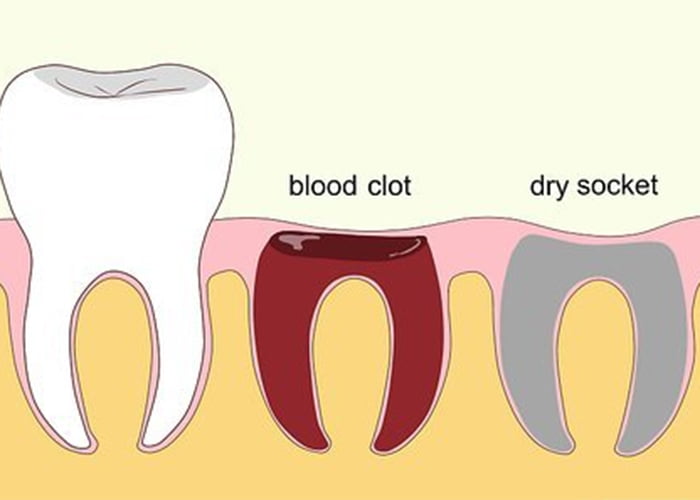Why Do Some Patients Experience Dry Socket After Extractions?
A dry socket is a painful dental issue that can occur after an extraction process. This happens when the blood clot, which should protect the empty tooth hole, is missing or comes out too soon. Without it, the bones and nerves in the area are open and can hurt a lot. You may question, “Why do some dry sockets heal just fine while the others cause a sharp pain?”
There could be a few reasons why this happens. For example, smokers are more likely to experience this. Taking certain medications also increases your chances of bleeding. The expertise of your dentist, as well as the nature of the process, can also be important factors. One of the common reasons is not taking care of your dental health after an extraction process.
After your surgery, your dentist provides you with a list of aftercare instructions that you should follow religiously. Not doing this is a big mistake. If you are experiencing a painful dry socket, visit an Encinitas dentist today. With professional care, they can help you heal faster, and you can soon go back to enjoying your life.
What causes dry sockets?
When your teeth are removed, they leave a space behind where blood clots may start to form. However, when this clot is lost or dislodged, it leads to a condition known as dry socket. The blood clot is important because it protects your underlying bone and nerves when the wound heals.
However, if the clot is removed or does not form properly, the bone and nerves get exposed. This can lead to pain and increase the risk of infection. It is important to know that bacteria and infection can also contribute to dry sockets.
If bacteria enter your socket, they disrupt the healing process and lead to the dislodging of the blood clot. Moreover, if you had any trauma or accident during your tooth extraction process, such as damage to your tissue, it can also disturb the blood clot.
Who is more likely to get a dry socket?
Smokers are at a very high risk because smoking can slow down your healing process. The suction created while smoking can dislodge the blood clot. Moreover, nicotine can reduce blood flow to the area and slow down your recovery.
Patients with poor oral hygiene are also more likely to get a dry socket. If you do not keep your mouth clean, bacteria can enter the extraction site and cause infection. Moreover, poor oral hygiene can also prevent proper clot formation or cause the clot to dislodge before time.
Certain medicines, such as blood thinners, can also affect your healing and increase the risk of a dry socket. Additionally, other medicines that affect bone healing or reduce blood circulation may also increase the chances of developing a dry socket.
Signs and symptoms of dry socket
-
Severe pain at the extraction site.
One of the main signs of a dry socket is severe pain at the extraction site. You may experience this a few days after your tooth is removed. The pain can be very sharp, and it may spread to your jaw, ear, or even neck. If you are experiencing any of these pain, visit your dentist immediately.
-
Bad breath or unpleasant taste.
Bad breath or an unpleasant taste in the mouth is also a symptom of a dry socket. This happens when the exposed area becomes infected, which leads to a bad odor and taste.
-
Visible bone in the socket.
In some cases, you may notice visible bone in the socket. After a tooth is removed, a blood clot forms to protect the bone and nerves. However, when the clot is dislodged, the bone beneath it becomes exposed, which can be seen in the socket.
Experiencing severe pain after a tooth extraction?
Schedule an appointment with your dentist for prompt diagnosis and treatment today!




